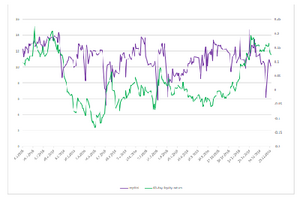Caner Karakurt, M.Sc.
Department of Financial Mathematics
June 2018
Supervisor: Ömür Uğur (Institute of Applied Mathematics, Middle East Technical University, Ankara)
Abstract
In 1993, by representing of CBOE Vix, global financial markets met volatility indexes. In 2003, methodology of the CBOE Vix is updated and it took the form which used today. Day after day, volatility indexes have attracted more and more investors and financial institutions, and soon volatility indexes have succeeded in becoming one of the most followed financial indicators. Following these developments, many countries have introduced their implied volatility indexes by using CBOE Vix methodology or its variations.
Although there are different academic studies and opinions about whether volatility indexes are consistent and successful in reflecting the markets volatility expectation or not. CBOE Vix and its derivatives are the most accepted indicators about reflecting investors’ volatility expectation.
In this study, firstly development of the CBOE Vix and the methodology of this index will be explained in detail. Then, other important volatility indexes, that are created using this methodology will be mentioned. Lastly, an implementation of this methodology to Turkish BIST 30 index will be made. The interest rates, needed for calculation of this index will be obtained by Svensson method.
Keywords: Implied volatility index, BIST 30 volatility index, XU030 volatility index, Turkish market volatility index, Svensson curve fitting method
